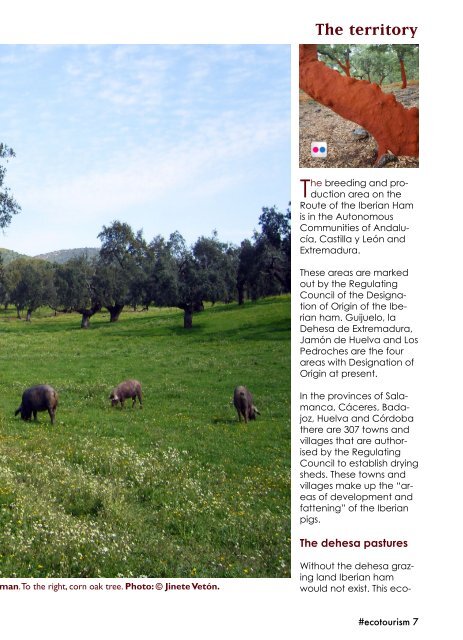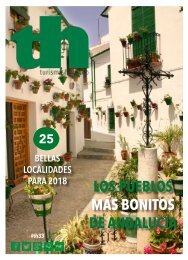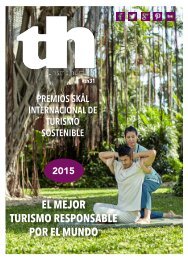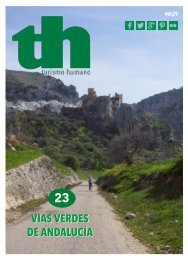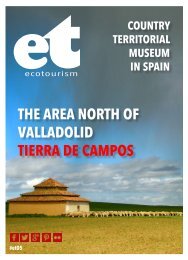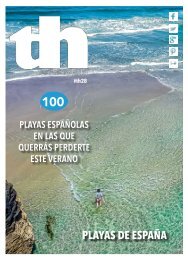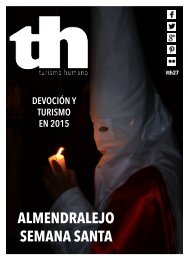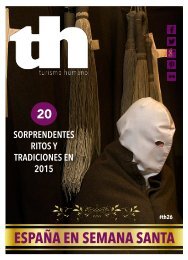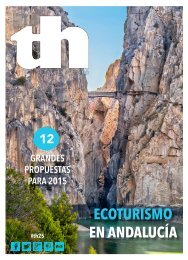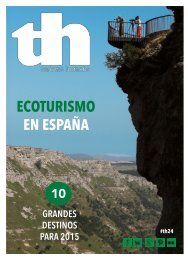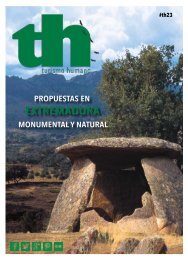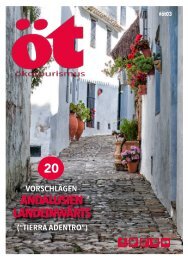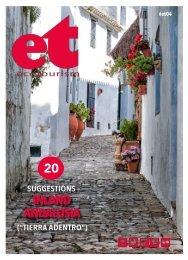Eco Tourism 03. The Route of Iberian Ham
Iberian Ham or jamón ibérico has become very fashionable. The main gourmet chains and prestigious restaurateurs all over the world offer Iberian ham as one of the most exquisite and exclusive products. It is only produced in a few regions on the Iberian peninsula of mainland Spain. The Route of Iberian Ham comes into being as a product of food tourism direct from the countryside and culture of the people along the route.
Iberian Ham or jamón ibérico has become very fashionable. The main gourmet chains and prestigious restaurateurs all over the world offer Iberian ham as one of the most exquisite and exclusive products. It is only produced in a few regions on the Iberian peninsula of mainland Spain. The Route of Iberian Ham comes into being as a product of food tourism direct from the countryside and culture of the people along the route.
Create successful ePaper yourself
Turn your PDF publications into a flip-book with our unique Google optimized e-Paper software.
<strong>The</strong> territory<br />
<strong>The</strong> breeding and production<br />
area on the<br />
<strong>Route</strong> <strong>of</strong> the <strong>Iberian</strong> <strong>Ham</strong><br />
is in the Autonomous<br />
Communities <strong>of</strong> Andalucía,<br />
Castilla y León and<br />
Extremadura.<br />
<strong>The</strong>se areas are marked<br />
out by the Regulating<br />
Council <strong>of</strong> the Designation<br />
<strong>of</strong> Origin <strong>of</strong> the <strong>Iberian</strong><br />
ham. Guijuelo, la<br />
Dehesa de Extremadura,<br />
Jamón de Huelva and Los<br />
Pedroches are the four<br />
areas with Designation <strong>of</strong><br />
Origin at present.<br />
In the provinces <strong>of</strong> Salamanca,<br />
Cáceres, Badajoz,<br />
Huelva and Córdoba<br />
there are 307 towns and<br />
villages that are authorised<br />
by the Regulating<br />
Council to establish drying<br />
sheds. <strong>The</strong>se towns and<br />
villages make up the “areas<br />
<strong>of</strong> development and<br />
fattening” <strong>of</strong> the <strong>Iberian</strong><br />
pigs.<br />
<strong>The</strong> dehesa pastures<br />
Without the dehesa grazing<br />
land <strong>Iberian</strong> ham<br />
would not exist. This ecoan.<br />
To the right, corn oak tree. Photo: © Jinete Vetón.<br />
#ecotourism 7


